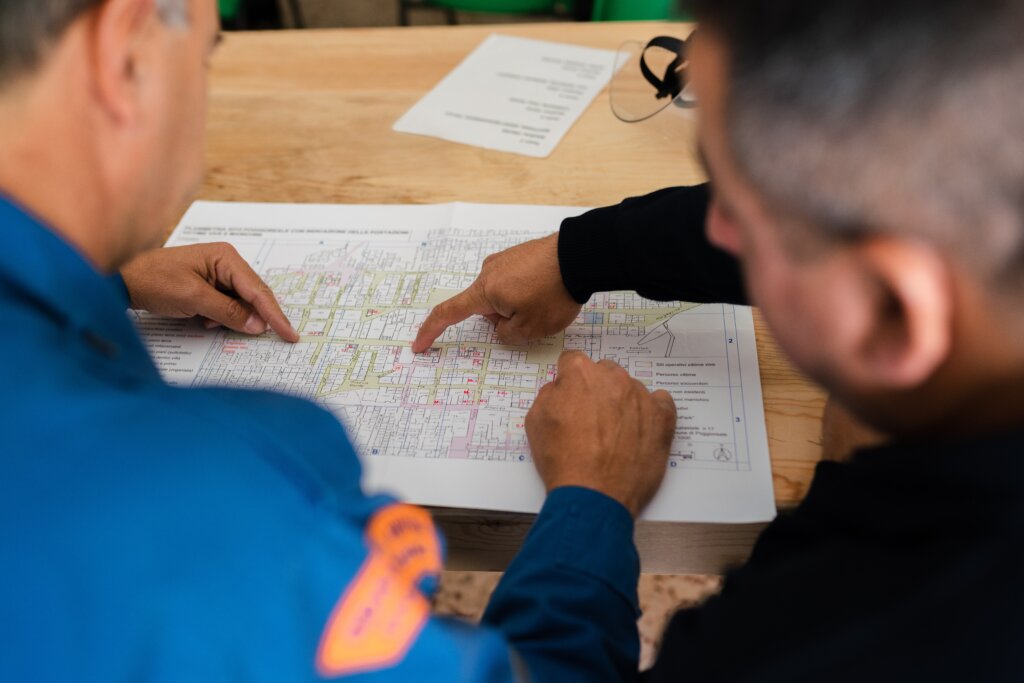Maxwell Executive Leadership Podcast #165: Are You Designing or Defaulting to Your Organizational Culture?

Your culture affects everything your organization is doing. Today, Chris and Perry conclude their talk with Greg Cagle about the 4 Dimensions of culture and how you design, deploy, promote, and protect the culture you desire for your organization.
Want to enhance your organization’s leadership culture? Learn more about our 5 Levels of Leadership private workshops HERE – Offered virtually and on-site to meet your organization’s health guidelines.
Download our Learning Guide for this podcast!
Read the Transcript:
Perry Holley: Welcome to the John Maxwell Executive Leadership Podcast, where our goal is to help you increase your reputation as a leader, increase your ability to influence others, and increase your ability to fully engage your team to deliver remarkable results. Hi, I’m Perry Holley, a John Maxwell facilitator and coach.
Chris Goede: And I’m Chris Goede, Vice President of The John Maxwell Company.
Greg Cagle: And I’m Greg Cagle, the 168th choice as a guest for The John Maxwell Podcast.
Chris Goede: And can you hear his excitement about being with us today, Perry. This might be the best introduction. And what I love about this is that he’s the only one we’ve ever had on here for three straight episodes.
Perry Holley: Yeah, but he’s the only one that’s ever needed three episodes to get a point across. Ah, we’re kidding, Greg. You know we love you.
Chris Goede: Yeah. We love you. And Greg is full of incredible content. But man, yeah, so much fun doing this with you guys. Hey listen, just before we get started, just as a reminder, the last couple of episodes, if you have not listened, I want you to go back and listen to those episodes. We’ve talked about the four dimensions of culture. We’ve talked about several brand new content pieces that we have for your team, for your organization.
And if you want to learn more about the culture shaping communication, you want to learn more about the four dimensions of culture, if you want to learn more about the courageous culture, which is really around the safety culture in your organization, I want you to go to John MaxwellCompany.com/podcast. There you can fill out a form and we’ll get back in touch with you about how we can bring that to your organization.
Well, today’s title, as we wrap up our series with Greg Cagle and the four dimensions of culture, today the title is, “Are you designing or defaulting your organizational culture?” And we’re going to have some great conversations around this. What I would remind you is that, just quickly, we laid out in the previous episodes the four dimensions of the culture, which there are the complacent, the compliant, the committed, and the courageous. Four dimensions, three of them being healthy, one of them not so much.
And we’ve talked about that and you want to learn which one isn’t, I’m going to encourage you to go back and listen to a previous episode. You may find out, even just listening to us today. We also talked a lot about this, and this is what I really love, is we got into what I would call the weeds of culture, which Greg talked about.
It’s how you think, how you act, and how you interact. And one of the things we’ve done is we’ve gone back and said, “Okay, great. How do we apply this on a daily basis? What does this look like in each dimension?” We gave you some tangible tools to be able to do that. So excited about the conversation today. Perry, tell us a little bit about where we’re going when we talk about we’re really questioning our leaders and this is really what we want this to be. We want this to be an awareness episode. We want you to really go internal and say, “Hey, are you designing or defaulting your organization or your team culture?”
Now, maybe you might say, “Hey, I can’t control my organizational culture,” but you can control your team. And I want to make sure that leaders understand that this may just be for your team. But talk to us a little bit about where we’re going today.
Perry Holley: Well, we’ve always said that culture eats strategy for lunch, but it also can help you eat your competitors’ lunch. I was with Greg as you were. We were in the room as he shared he has got a book coming out toward the end of this year on these four dimensions of culture.
I was able to get a pre-read on some of that. I’ve really taken. Greg, I really appreciated this, how it positions you with your competition when you think of the culture. If I could just read the passage and get you to comment on that. But you wrote in your book that, “Whatever their outward response, inwardly the opposition knows that they are standing before more than just a collection of employees. They’re facing a culture, an identity, an ethos, a belief system, and a collective passion and purpose beyond anything they’ve faced before. When your company has a healthy, balanced, energetic, and synergistic culture, you force the competition to react to the way you do business. You set the terms of the battle and you determine how business is done within your industry. The competition is forced to focus on what you do instead of what they do.”
I just thought that was powerful, and a real testimony about how important culture is to everything you do.
Greg Cagle: Yeah. And if you look at all the great companies that we look back and admire, the Googles, the Amazons, the Apples of the world, what is the one thing that you can say they’ve done? Their competition reacts to them. Their competition has to say, “What is Google doing? What is Amazon doing? What is Apple doing and how do we react to that to maintain our share of the marketplace?”
And so the focus on beating you isn’t there. The focus on keeping up with you is there. And to that point, what we teach is that great leaders understand one thing. And that is the brilliance of your organization lies within the collective. In other words, great leaders know that if you limit the organization to just your bandwidth, we’re going to have a lid that we hit. It’s called the law of the lid. If we as leaders understand that it’s the collective brilliance of the employees and the people that work within our organizations that create greatness, then we can reveal that greatness and extract the brilliance of the collective through the way that we define our culture. And that is the ultimate goal if you’re in leadership.
To be a Successful Leader, You Need Feedback on Your Leadership.
We’re excited to announce our new and improved Organizational Effectiveness Survey (OES). The OES gathers feedback from employees to give leaders and management the knowledge and action plans needed to develop a more effective and productive work environment. Our new version measures 4 areas of your business: Leadership, People, Strategy, and Performance.
Chris Goede: You know, when you talk about this in regards to defining our culture and as leaders, we talk about culture. Matter of fact, it’s the whole reason why we do what we do. The three of us in our organization, is that we want to help leaders and teams have a better leadership culture. That’s our goal. And it goes back to what Perry and I talk about a ton, and it’s the foundation of which we are built off of, which is John’s 5 Levels of Leadership model. And when you have the right culture, when you have the right dial turned up to the right amount on each one of these dimensions that we’re talking about, or turned down, right?, in the one culture, what I think ends up happening is that allows you as leaders and as teams to connect with your people. Right?
And so when you’re able to connect with your people, then that drives incredible interaction, which by the way, is the third point of what Greg talked about, is how we define our culture. How do we think, how do we act and how do we interact? That right there, guys, as a leader, what you do as a level two, that’s what we talk about a ton in this. People follow you because they want to. It’s the discretionary effort. It’s the ability to connect with them.
Remember it’s the relational level, but it’s more than that. It’s about connecting and you connect with people through how you interact with them. And it comes right back to this whole culture piece. And so when we came up with this title today, the three of us kind of worked on it together, because we were like, we want to give you some questions.
We want to challenge you into where your team culture is, where your organizational culture is. And the first one is, is simply what are you doing? Or how are you designing your culture? And so, Greg and Perry, I’m going to throw this to kind of to both of you. You guys do an incredible amount of coaching and consulting and facilitating for us. One of the things I’d like for you to just share is maybe an example of a leader to where you’ve seen them model effectively designing their culture.
And maybe you don’t have one, right? Because there’s a high percentage of this that we go, “Hey, there’s a lot of leaders that we’re working with to where we go, man, they’re not even designing it because it’s just happening accidental,” which is kind of where we came up with the title today. We wanted to make sure that it just wasn’t defaulting. So Greg or Perry, any thoughts on that?
Perry Holley: Go ahead, Greg. You’re the expert.
Greg Cagle: Yeah. Well, yeah. That’s why I’m the 168th choice podcast because I’m such an expert. Yeah. I’ll attempt to unpack that just a little bit.
You know, I’m reminded of one of our clients, Chris, in Australia that we’ve worked with for years. In fact, we were a big part of helping them go public from being a privately held organization. I’ll never forget the first time I went to Sydney and I’m walking through this office with this leader, and it’s phenomenal. It’s this old warehouse right there on the harbor in Sydney. It’s beautiful, and it’s historic. It’s like a museum. And as we’re going through there, I’m seeing pool tables and I’m seeing massage chairs, and I’m seeing these little think bubbles, and I’m seeing ping pong tables.
And I’m walking through and talking to the CEO. The CEO’s name is Sam. I said, “Sam, what are you attempting to develop?” He said, “It’s all about the culture, Greg. It’s all about the culture.” I said, “What do you mean?” He goes, “Ah, you know, pool tables,” and this and that. And the first thing I told him, I said, “Sam, you do realize that culture’s not about massage chairs and pool tables, and all of that?” I said, “That’s not what culture is.”
And so I think the first thing that leaders have to understand is culture is an environment, but it’s not an environment of those kind of things. The environment, it goes right back. How do you want people thinking, acting and interacting in your organization? So they have to be intentional about designing that, and many leaders miss that point.
Chris Goede: Yeah. And Greg, what I love about that is those times are passed, right? The whole massage chairs, ping pong tables, and all that kind of good stuff. And you even think about now where we’re at in this virtual world and how leaders are leading virtually. And you’ve got to be so intentional about how you’re designing it.
Now, let me just, again leaders, the question is, are you designing your culture? And here’s the thing. Of the four that we’re going to share with you today in these questions, I think that’s probably the easiest one. I think we probably get to where we say, “Hey, yeah, no, we’re designing it.” But I want to encourage you, leaders, as you’re thinking about this, to Greg’s point, it is more than the whole ping pong table. It is more than the massage chairs. You’ve got to be thinking virtually and all kind of stuff.
But are you designing your culture? Are you being intentional about that? Now, the next three, I think there’s some big gaps here because I think a lot of us sit in a room and develop a strategy and design it. But then the next question, you ask this Greg, you talk about it, is are we deploying it? How are we deploying it? What does that look like? Can you give us a little context behind that in regards to how you’ve seen that fleshed out in some of the organizations that we’ve worked with?
Greg Cagle: Yeah. So you’re right, Chris. I’m glad you kind of brought that up because I probably didn’t do a very good job of expressing it.
The design piece, most leaders get and they understand. And John always says this. He says, everything rises and falls on leadership. Well, that includes the design and deployment of your culture. Because the four elements, design, deploy, promote and protect. Two of those are primarily the leader’s responsibility. And that’s the designing of our culture. What do you want it to look like? How do you want people thinking, acting and interacting within your organization? And then how you deploy that to where it gets deep into the organization?
And I’ll use a great example. We have a client that’s in the fitness business. They are a very big player in the fitness business. And they came to us about two years ago and they said, “Look on our front line, at our club level, our club managers and the people that interact with our customers, they just don’t have the obsession that we want them to have to deliver a customer experience.” Right?
And here’s what they attributed it to, Chris. They said because of the nature of our business, many of our frontline employees in our health clubs out there are part-time, or this is just a stepping stone, a part-time job where they go to college. It’s not an ultimate career choice, and so therefore they’re just not as engaged in delivering the customer experience we want.
And I said, “Well, that may be true.” But I said, “One thing I know about people is they really enjoy pursuing a purpose.” And whether I’m only here part-time, or whether I’m here full-time, if the purpose I’m pursuing while I’m here is inspiring, I’ll do it. And I said, “What we’ve got to do is we’ve got to come up with what it is in our culture, what’s the one thing, the one hill that we want all of our employees to die on?” The commander’s intent, if you will.
And we came up with a rallying cry for those frontline employees, and we gave them a purpose to pursue. They already had all the rules and procedures and regulations of how to keep the club clean and how to greet a customer and all of that. They had all of that. That’s the compliant dimension. What they didn’t have was the courageous piece, the purpose, the inspiration.
And so it was very simple because this organization primarily appeals to people who are naturally uncomfortable in a workout facility. They don’t like to see all the muscle guys around and all that. It intimidates them. Their whole mantra is you won’t be judged when you come work out here. We just want to impact a healthy lifestyle.
So here’s what we told the employees. Very simple. If you don’t do anything else, every day you come into work, here’s what we want you to consider. Impact someone today. And that became the culture there. And it was that impact that the employees locked into, that started delivering the customer experience that the organization always wanted.
And this is really cool. We started getting emails from general managers all over the country, Kansas City, or Michigan, or Ohio. And they’re saying, “My employees aren’t leaving after their shift because they haven’t impacted anyone yet.”
Perry Holley: Wow.
Greg Cagle: And so what happens there is we designed it. We said, “Now you go own it and live it out. Here’s your purpose.” And it began to go viral.Perry Holley: So you’re creating culture carriers at that point. They didn’t just design it and then hope it went to the win. You purposely deployed it through the organization. And now every employee is carrying that culture out to the client, to the customer, to the prospect, to the people that are coming in to check out the club. Yeah. I love that.
Chris Goede: Now the third one, and this may be a little bit of a differentiator for me from you guys to better understand the difference. Because the third question is, okay, then who is, and how are we promoting it? Right? So we’re deploying it. That’s boots on the ground, right? Who is then responsible? And leaders, do you have people that are responsible for promoting the culture? So Greg, talk a little bit about the different in that, between the whole deploying, and the promoting, and the responsibility, and what that looks like.
Greg Cagle: Yeah. So this step sounds deceivingly simple.
Chris Goede: Correct.
Greg Cagle: Okay. I want to underline deceivingly because it’s basically a handoff from leadership to employees and says, okay, we’ve designed it. We’ve given it to you. We’ve deployed it. Now, get out there and promote this thing. And it sounds real simple, right? The key here is, and I’m going to go right back to level two, Chris. I’m going to go right back to level two of The 5 Levels of Leadership.
For an organization’s employees to sustain any effort over a long period of time, there has to be an emotional connection to that. And there has to be an emotional connection to not only the purpose we’re pursuing as an organization, but an emotional connection to want to perform for that leader.
And so now with that connection to the value system of the organization, to the connection to my leader as an individual, and connection to the purpose we’re pursuing collectively, now as an employee, I begin to promote the culture. And it sounds like this, “Hey, Barry, I know you’re new here, but you better understand something. This is the way we do things here. This is the way we do things here and I want you to understand. I know you came from X, Y, Z Company. We’re not like that. Welcome aboard, jump in, be a part of us. But here’s the way we do stuff here.” And that becomes the promoting piece.
Perry Holley: Is that courageous? Is that when you think of the dimensions, for me to say that to someone else, does that require courage? Or actually, it sounds more committed to me now that I say it out loud.
Greg Cagle: How about if I said yes and yes.
Perry Holley: Okay.
Greg Cagle: Look, I know we didn’t even plan this. You led right into what’s Chris’s third question’s going to be, which is how do you get to the protect piece? Chris, can I jump in because he jumped over?
Chris Goede: Absolutely. Take it.
Greg Cagle: So the promote piece is about commitment, right? I’m committed now to promote this culture to everyone that I work with. All right? The courageous piece is when you step out of line, okay? And I say, “Whoa.” I say, “Perry, you know better. That’s not what we do here. You walked right past that lady on that fitness equipment. You saw that she was using it wrong. You saw that she was at risk of an injury, and you didn’t take this time to stop and impact someone today. You didn’t help her understand that piece of equipment and take her through what she needed to know so she doesn’t injure herself. That’s not the way we work here. You don’t step over problems like that.”
That’s the protect, see? We protect the culture that we’ve got. Your behaviors have to be consistent. And if they’re not, here’s the beautiful message for leaders. You tired of being the bad guy. Okay? You don’t want to be the one that has to enforce all the time? Build your culture and sit back and watch your employees do it for you.
We have a great story with one of our organizations that we deal with in a manufacturing business, right? They’re known for high performance, high production. I mean, it’s off the chain what they do. And I will never forget I’m in a room with a supervisor one time. And I ask a supervisor, “So let me ask you a question. What do you do with an employee, because you guys are so focused on performance and it’s off the chain what you do. How do you, as a leader, deal with an underperforming employee that’s on the front line there?”
He didn’t even hesitate. He said, “I don’t do anything.” I said, “Well, come on, man. You don’t have the culture you have to tell me that the leader’s doing nothing.” And he smiled. He said, “I just sit back and wait. There’ll be a meeting in the parking lot in a few days. It won’t be me. It’ll be his fellow employees having a conversation with him.” Now that’s culture folks. That’s protecting the culture. Right
Chris Goede: What I love about what I love about that example, Greg, and I think I’ve heard you say this before. If not, I’ll give you credit for saying it, is that whether you’re a leader of a team, or leader of an organization, you can’t be everywhere casting out the culture of what you want it to be. And so if you do not become very intentional, back to our title today, right? If you’re not going to design it intentionally as a leader of a team or an organization, and you’re not asking yourself these four questions: Did I design it? What does it look like? Did I set it up so it’s deployed properly? How is it being promoted? Is it being promoted? And then who is, and how are we protecting it?
Those are questions you should be asking yourself because you cannot be everywhere at all times as a leader. Right? And we talk a lot about this, which is where, leaders, there are only certain things that you can do for the team or the organization, that you should be doing. And other than that, you’ve got to have the team around you to be able to do that.
And I go back to, Perry, and I’m going to throw this back to you, Perry. But how you opened it up. I love this where you were talking about your competitors, and are you reacting to them because of their culture? Or are they reacting to you? Because ultimately that’s the differentiator. You could all sell widgets, right? But the differentiator in what we do is not so much the product. It’s not the process. It’s not the systems. It’s our people. And at the foundation of that, it’s our culture.
And so man, Greg, we’re going to have you back on, because I don’t want to hear again about the fact that you took us 168 episodes to get you here because the three lessons that we went through about culture, listen those that are listening, this is real time. This is stuff that is resonating with leaders. We are bringing to you the things that we’ve done and put together to help solve issues with organizations. And I think that we’re probably struggling with it too. I, as a leader myself, struggle with it. So it’s been good for me.
So, Greg, grateful for you and the value that you’ve added to leaders and organizations around the world. And I just want to remind everybody that the three content pieces that we’ve talked about, we’ve been deploying, right?, for probably the last six months or so, and our team is here to serve and add value to you. And if we can do that, Perry will give you the URL of where to submit a form or question or inquiry about how we can partner with you to do that.
Perry Holley: Yeah. It’s been a great having you, Greg, and thank you so much for taking the time to join us. And as Chris said, if you’d like to leave us a question or a comment, if you’d like to get some more information about these culture offerings or any of the other offerings of the five levels, 360 Leader, we’d love to hear from you. You can do that at JohnMaxwellCompany.com/podcast. There’s also a learner guide there for all three of these episodes that’ll show you the four dimensions of culture model, and a few notes about what Greg’s presented for us here today.
Thank you for joining us. Always grateful that you would be with us. That’s all today from the John Maxwell Executive Leadership podcast.












Be the first to comment on "Maxwell Executive Leadership Podcast #165: Are You Designing or Defaulting to Your Organizational Culture?"